As image-stabilised binoculars occupy a unique niche in binocular astronomy, it always piques our interest when a new player enters the field. The Vixen Atera H12x30 binoculars have a one-piece body with adjustable eyepiece turrets.
As well as a hard-shell case, there’s a 25mm-wide neoprene neck strap, individual eyepiece caps, but no caps for the objective lenses.
Although it’s not armoured, the fibreglass-reinforced polycarbonate body is smooth to the touch.
For more on binos, read our guide on stargazing with binoculars, or our pick of the best binoculars for astronomy.
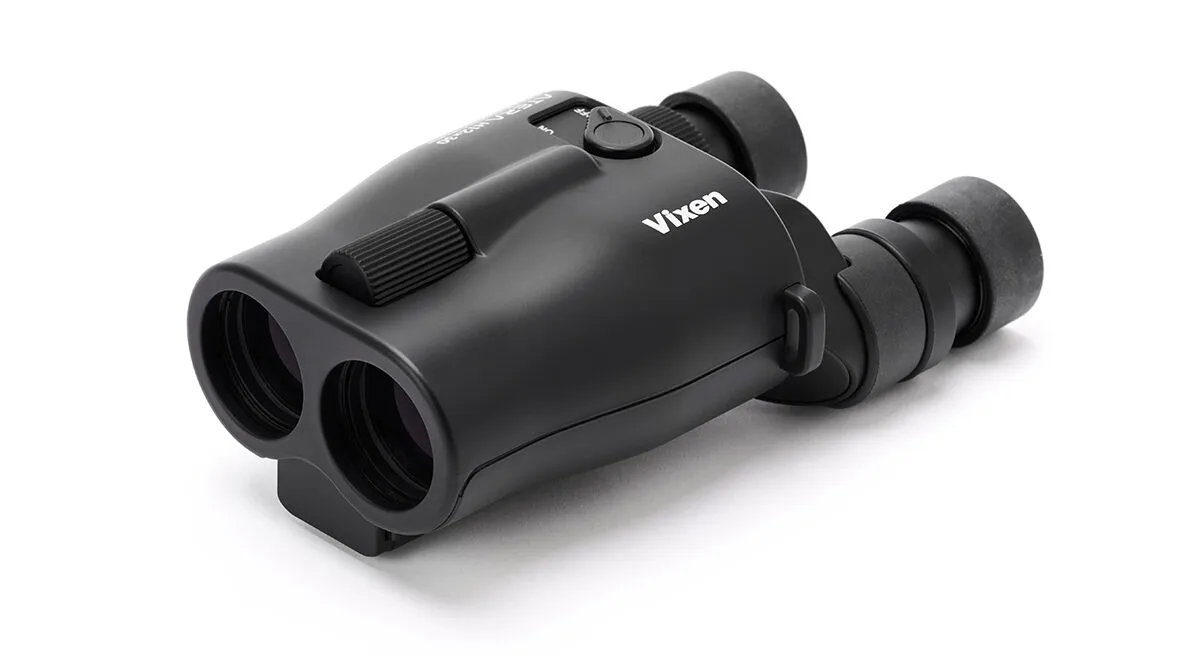
The eyepiece turrets incorporate BaK4 subsidiary prisms. You can change the interpupillary distance (IPD) – the distance between the pupils of your eyes.
By rotating these turrets, which have enough resistance to movement to prevent you from accidentally altering the IPD.
There is the usual dioptre adjustment (for adjusting for any difference between your eyes) on the right eyepiece, which is also stiff enough to prevent any accidental adjustments.
The centre-focus wheel is situated at the objective lens end of the body and it’s light enough to be operated with your little finger while having a satisfyingly smooth feel with no perceptible backlash.
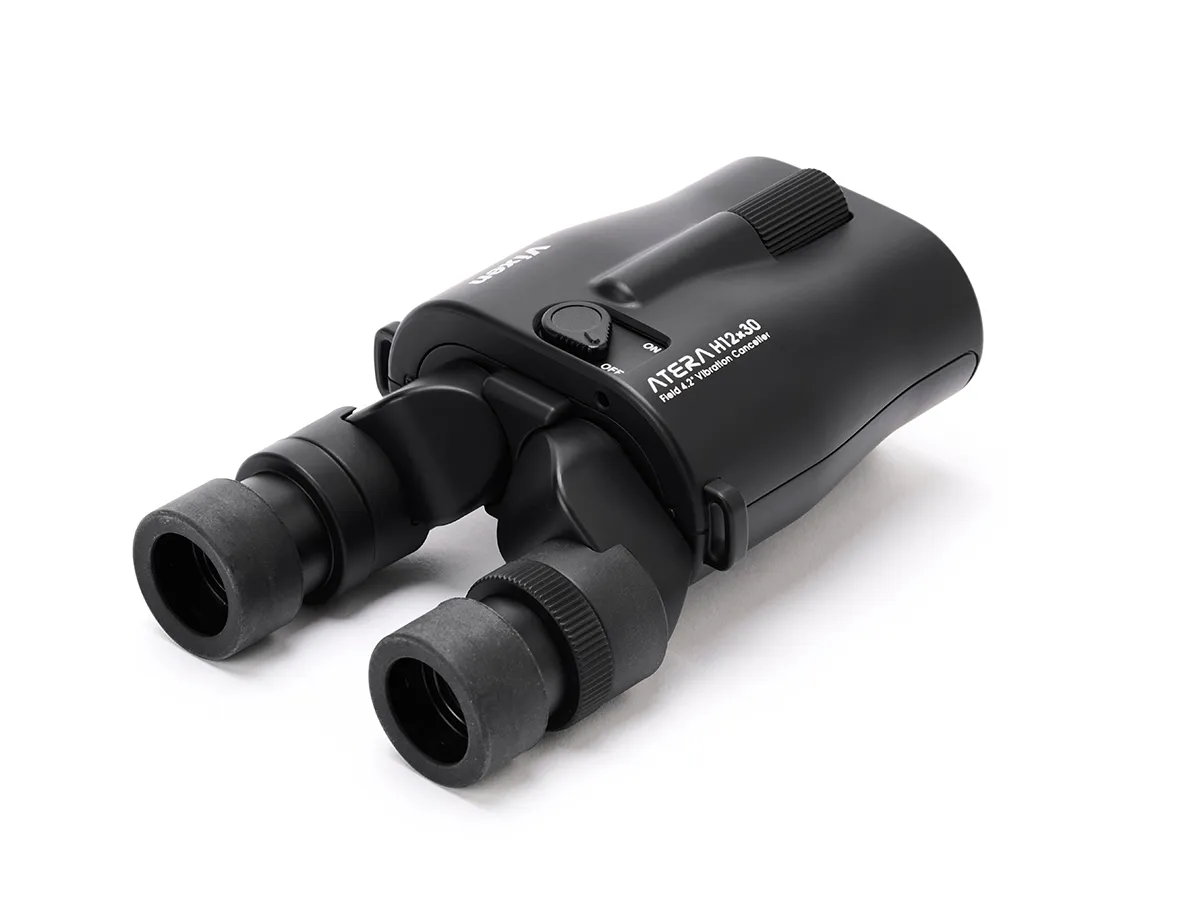
Vixen refers to its image stabilisation system as ‘vibration cancelling’ and the ‘Vibration Canceller’ switch is located on top of the body, conveniently placed for operation with your left forefinger.
The battery compartment is out of the way on the front underside of the body, with enough room behind it to comfortably accommodate your thumb.
Sensibly, its cap is tethered, which will help to prevent you losing it if you need to change batteries in the dark.
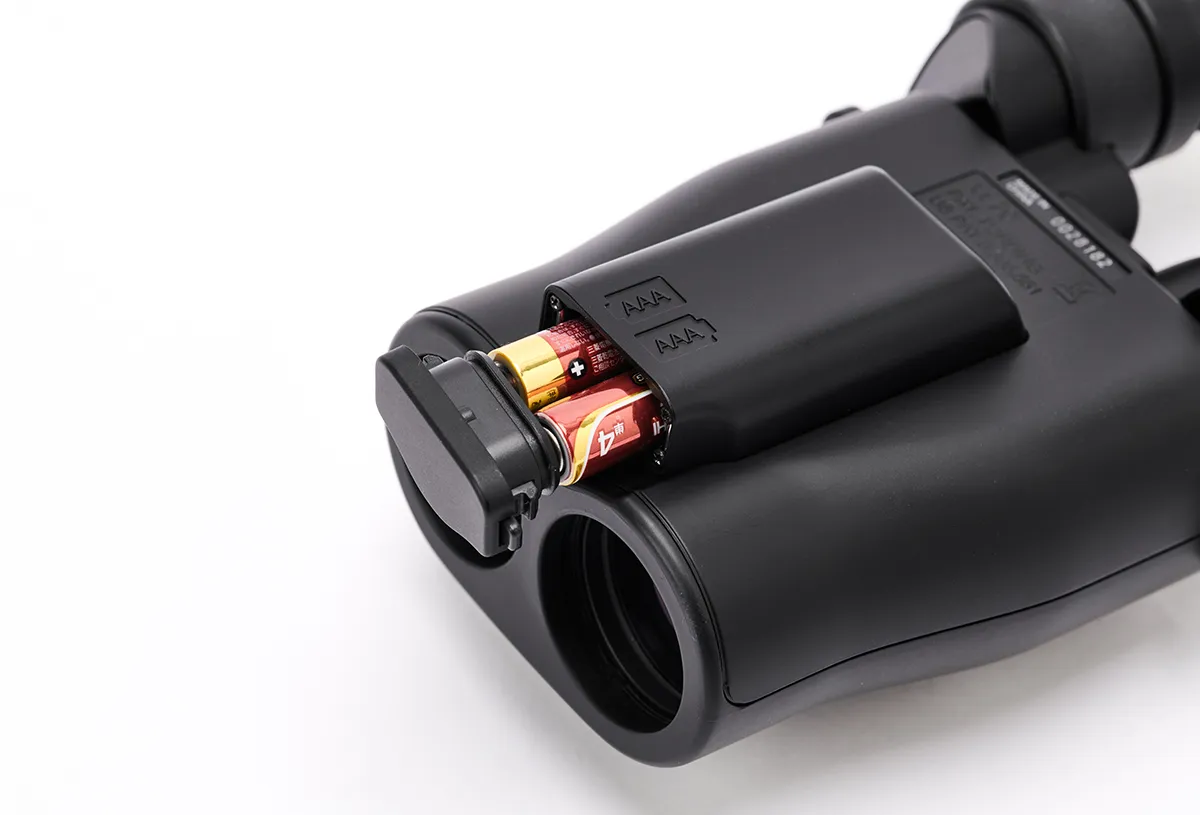
The eye relief (the ideal distance your eye should be from the eyepiece) is specified as 17.5mm and we were able to see the entire field of view with the four-position eyepiece cups in their most extended position; you can experiment to see which position is most satisfying.
The lowest position is 2mm above the surface of the eye lenses, which reduces the effective eye relief to 15.5mm, but this was easily enough to enable us to see the entire 4.2° field of view when we wore spectacles.
If you have long-sightedness, or mild to moderate short-sightedness, there is a sufficient focal range to accommodate your eyes if you prefer to observe without glasses, and we found that the 2.5mm exit pupil reduces the effects of mild astigmatism to tolerable levels.
By eliminating any vibration blur, the ‘Vibration Canceller’ system makes it easy to focus the binoculars.
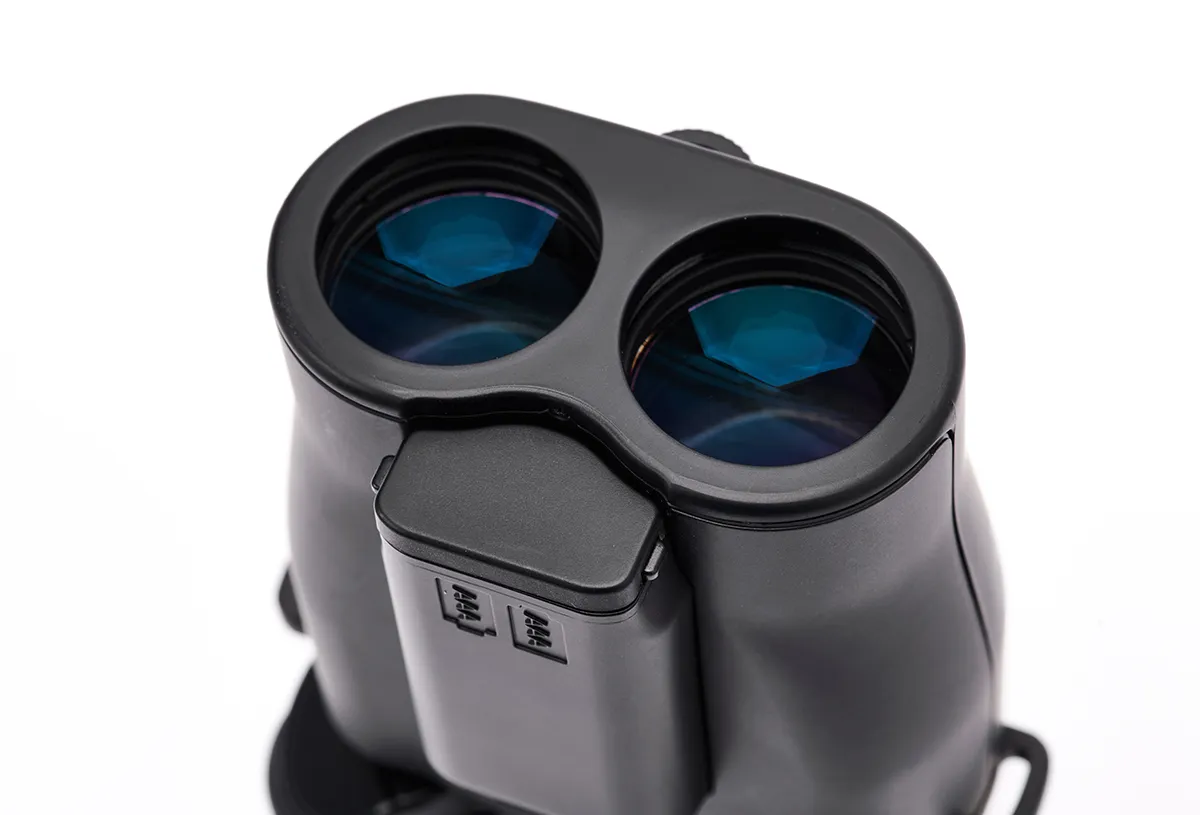
Focus is sharp across the central three quarters of the field of view, with slight softening at the periphery – due to coma and astigmatism – visible on bright stars.
There is a tiny amount of pincushion distortion, where straight lines appear to curve outwards from the centre, which is necessary to negate any rolling-ball effect when you are panning.
Stray light is well controlled, so you won’t get ghost images if you are observing the Moon, which is one of Vixen’s suggested targets for the binoculars.
When it comes to chromatic aberration – an effect seen as unwanted coloured rings around brighter objects – it’s not perceptible in the middle of the field of view, and it only slightly affects high-contrast objects like the lunar terminator when they are off-axis.
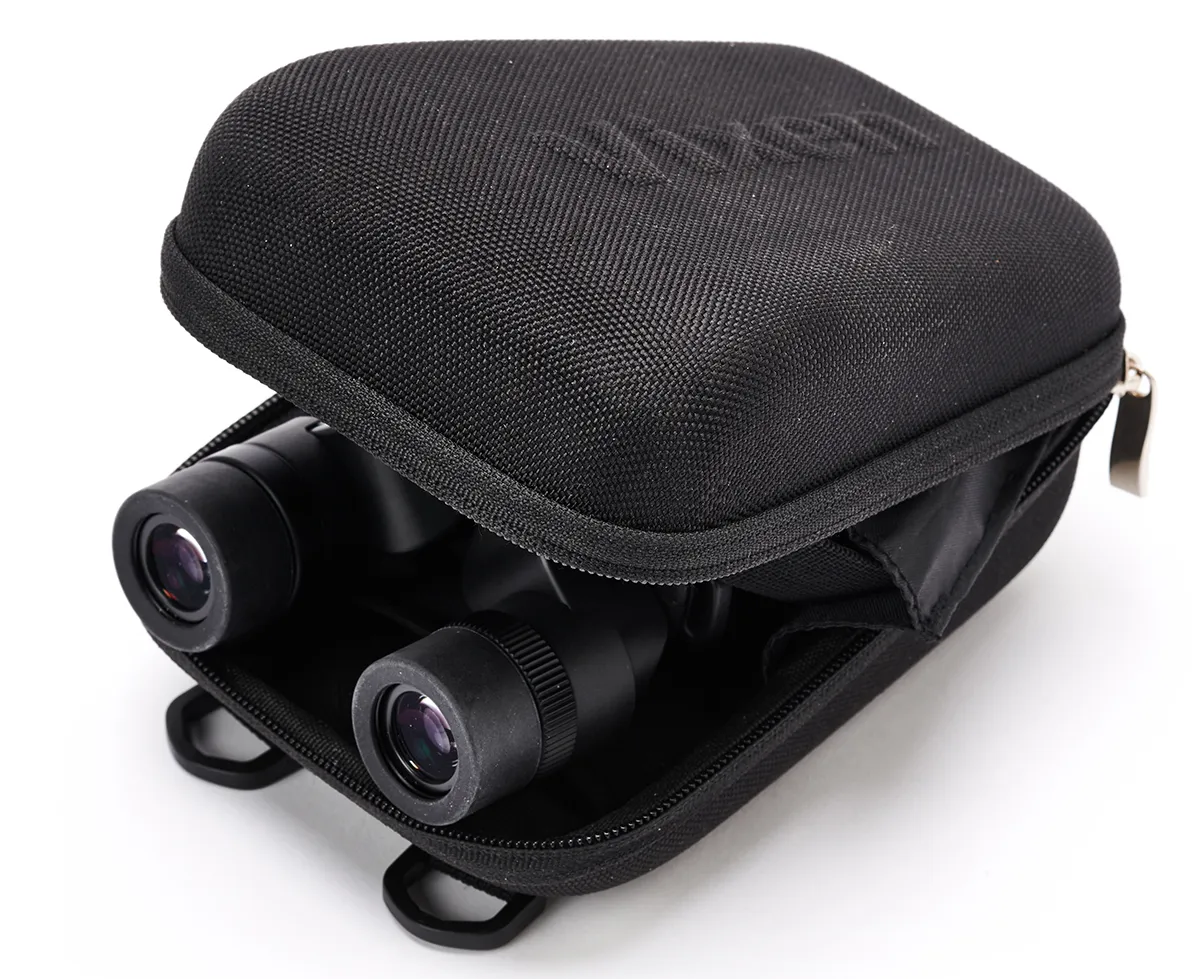
We noted that the combination of excellent control of stray light and the use of effective coatings throughout preserves colour fidelity and contrast.
The apparent field of view is only 50.2°, which is on the narrow side for astronomical binoculars, but it does mean that you don’t get severe edge-of-field aberrations.
You need to remember that these are only 30mm aperture binoculars with a 2.5mm exit pupil, and consequently the night-time images are not particularly bright.
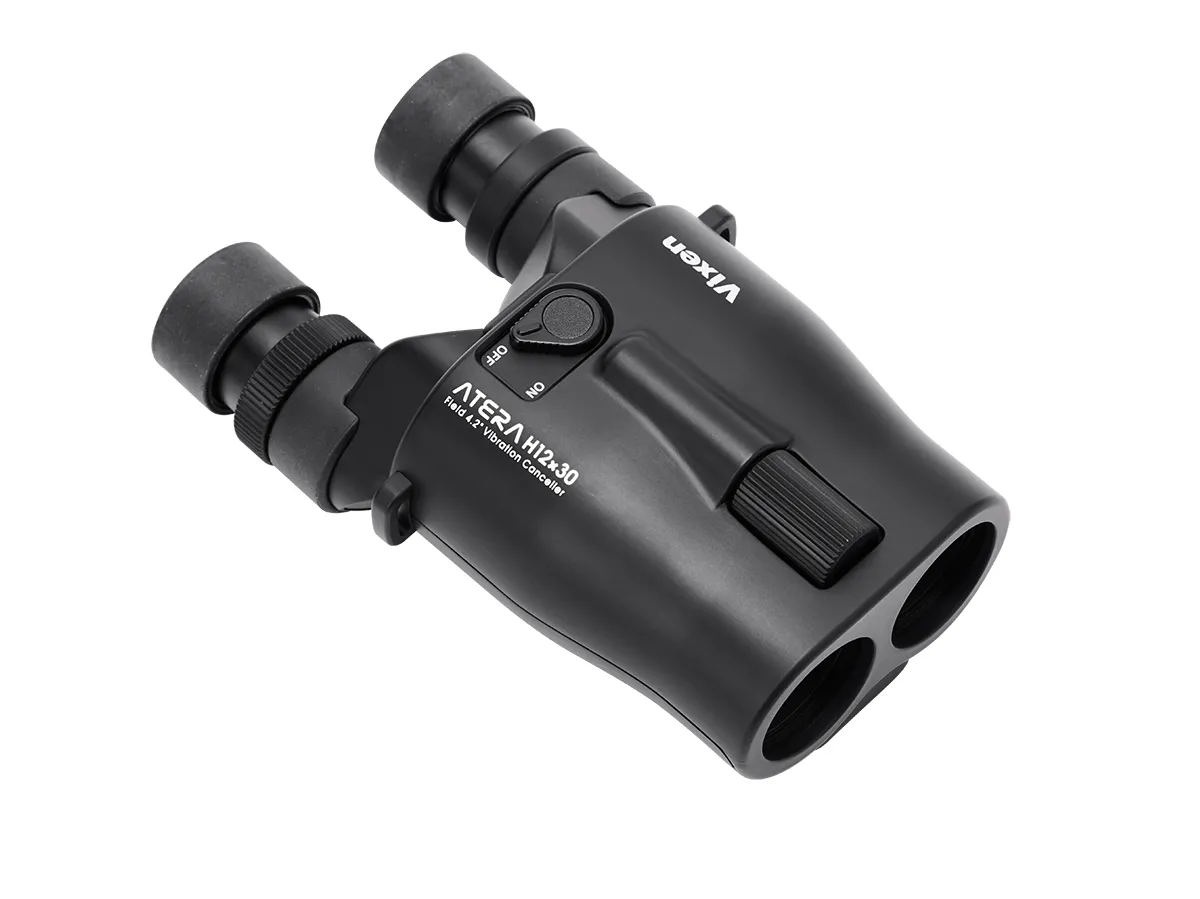
The ‘Vibration Canceller’ system gives you about an extra quarter of a magnitude of depth, but it doesn’t make the brightest stars perceptibly brighter.
This was apparent when we tested the system on the Pleiades, M45, where its only effect was to bring a dozen or so more stars into view.
It’s good, however, on some brighter double stars. We discovered that we could not split Iota (ι) Cancri, which has a separation of 30 arcseconds, until we activated the ‘Vibration Canceller’.
If you want a highly portable pair of image-stabilised binoculars for general and occasional astronomical use, the Vixen Atera H12x30 is well worth considering, but you would probably want a bit more aperture (and, therefore, image brightness) in binoculars that are primarily for astronomy.
Vixen Atera H12x30 Vibration Canceller
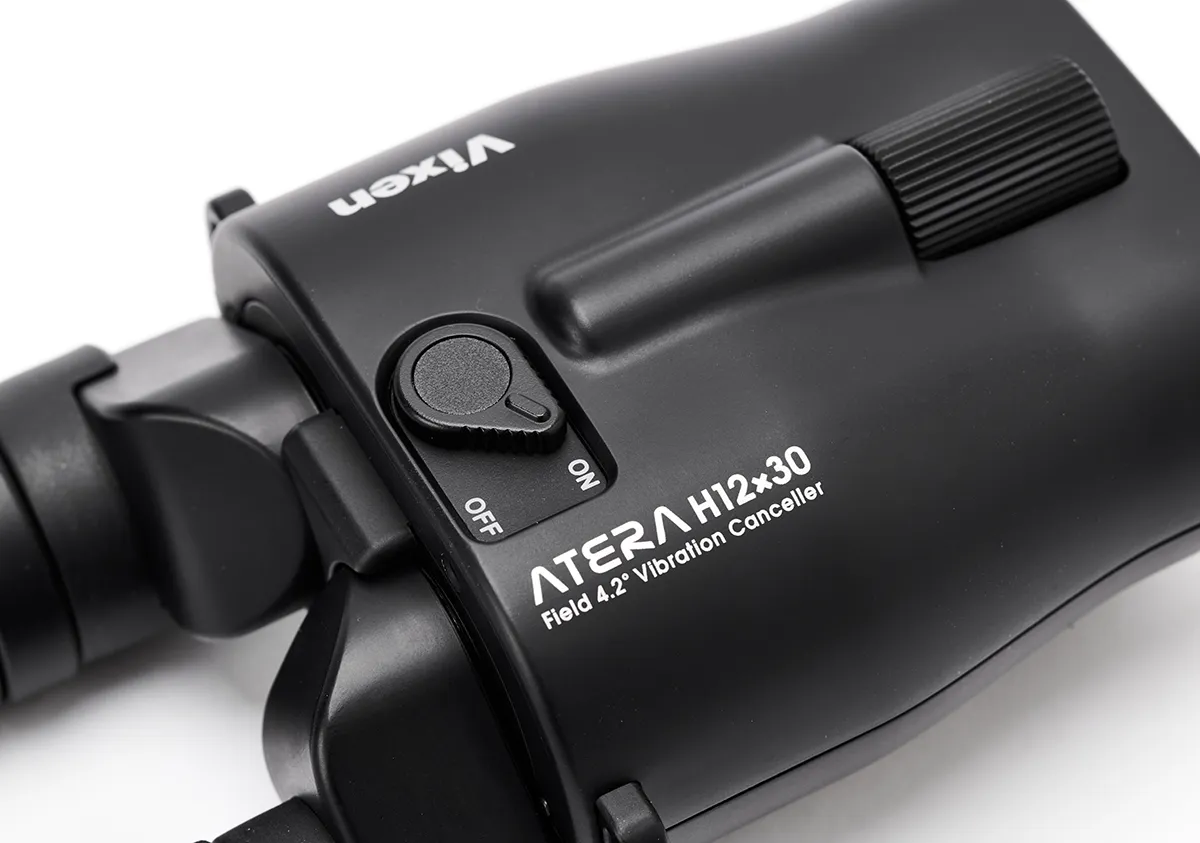
The ‘Vibration Canceller’ is Vixen’s name for its image-stabilisation system.
In each light path, there is a gimbal-mounted prism system that is controlled by gyroscopic sensors and small motors.
It compensates for high-frequency vibration with a magnitude of up to about 3°, i.e. the shakiness that reduces your ability to resolve fine detail.
The system is good enough, and the binoculars are light enough, to enable you to hold them with one hand, freeing the other for notes.
The system is activated with a lever on a rotary toggle switch (which is a little small for gloved fingers).
A green LED indicator, which is visible when you take the binoculars away from your eyes, alerts you if you have left it switched on but, to preserve battery life, it also times out after five minutes of no motion.
The ‘Vibration Canceller’ works well with slow panning across the sky, but large fast movements can induce some ‘overshoot’, which is disconcerting, but it damps down within less than a second.
Vixen Atera H12x30 outstanding features
Effective coatings
The anti-reflective multi-coatings on the transmissive surfaces of lenses and prisms ensure that a maximum amount of light is passed to your eyes. The roof prisms have phase coatings on their apexes and high reflectivity dielectric coatings on their reflective surfaces
to give good contrast in the eyepiece.
Readily available batteries
The Atera binoculars take two common AAA (aka LR03) batteries, so carry a few spares to ensure that you can always use the ‘Vibration Canceller’ system. The specified battery life is up to 12 hours at 20°C with alkaline batteries, but expect this to be considerably shorter in cold weather.
Good IPD range
The generous interpupillary distance (IPD) range (the distance between the pupils of your eyes) of 55mm to 75mm, combined with small diameter (42mm) eye cups, means these binoculars will suit a wide variety of faces. Even at the minimum IPD, there is 12.5mm between the eyepieces, which easily accommodates most nose sizes.
Internal focusing
The sliding eyepiece tubes found on conventional centre-focus binoculars are a potential route in for unwanted water. Here, the problem is eliminated by having internal focusing so, although the specifications state that the binoculars are not waterproof, you can still use them on dewy nights, provided you dry the body afterwards.
Hard-shell case
These are potential ‘go anywhere’ binoculars, so a decent case is essential. The dual-zipped hard-shell case has a thin foam padding on the inner surfaces to protect the binoculars. You can use either a removable shoulder strap or a belt loop for convenience when you are carrying it.
Vital stats
- Price £593
- Optics Fully multi-coated
- Aperture 30mm
- Magnification 12x
- Prisms Roof (internal) and right-angled (eyepiece turrets)
- Angular field of view 4.2°
- Focusing Centre focus, moving internal lens group
- Eye relief 17.5mm
- Interpupillary distance 55–75mm
- Weight 422g (without batteries)
- Supplier Bresser
- Tel 01342 837098
- www.bresseruk.com/en/home/
This review originally appeared in the April 2021 issue of BBC Sky at Night Magazine.
